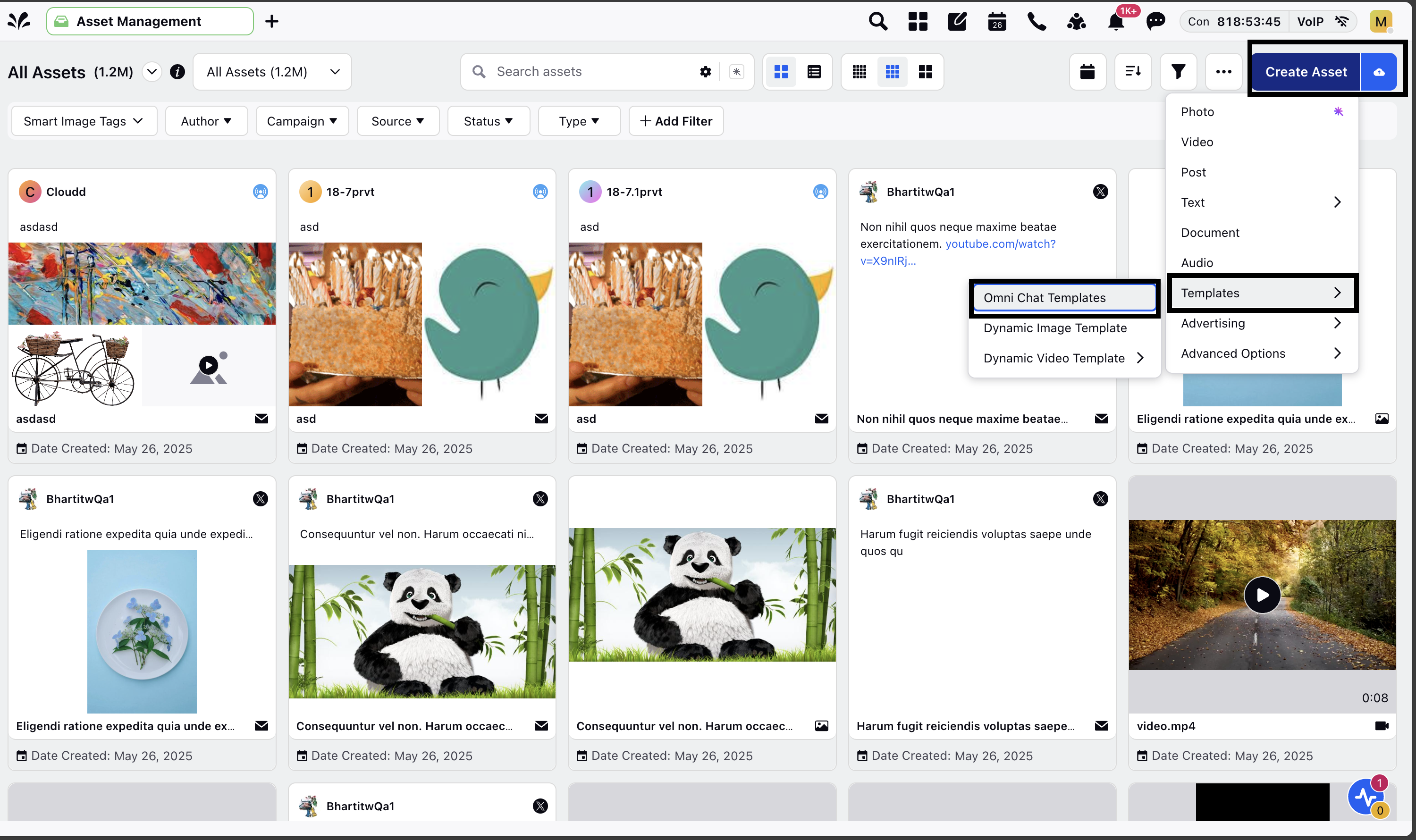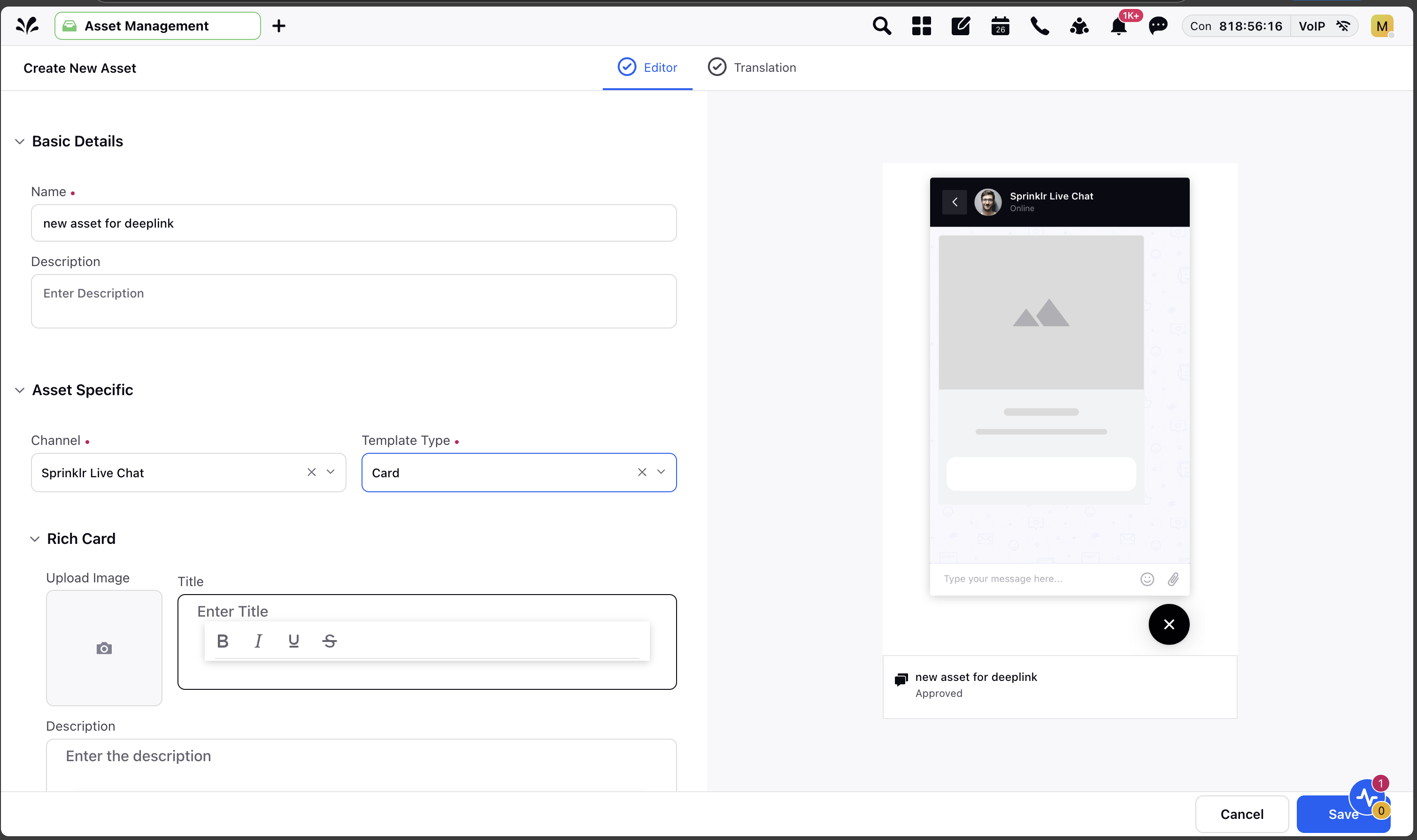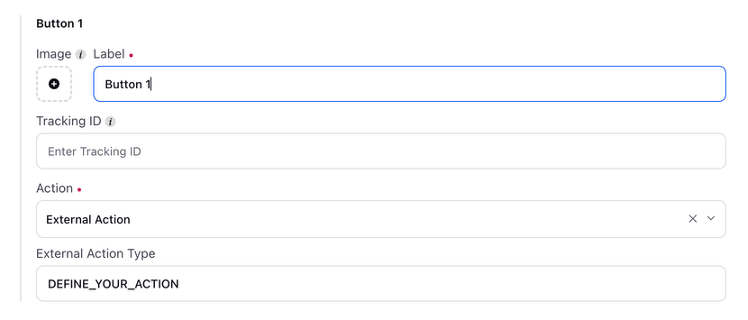App Deeplinking
Updated
Overview
This article explains how to enable deep linking in the Live Chat Mobile SDK, allowing mobile apps to respond to user interactions within the chat.
By setting up external actions, brands can create buttons in chat messages that trigger specific behaviours in the app, such as navigating to a particular screen or perform any specific action. This approach helps create a more engaging user experience by connecting chat interactions directly within the app.
Benefits of App Deeplinking
Improved User Experience - Deep linking allows users to go directly to the content or feature they’re interested in, instead of navigating through multiple screens. This makes the app feel faster, more intuitive, and user-friendly.
Higher Engagement and Conversion - By guiding users to specific in-app destinations—like a product page, a special offer, or a support screen—deep links can increase user interaction and drive actions that matter to your business.
User Interaction Flow
Asset Publication and User Interaction
Once the asset is published, users will see the card in the chat. When they click a button configured with an external action, the SDK sends an event to the mobile application.
Event Handling by the Brand Application
The Live Chat SDK will send the external event to the brand's application. Based on the "external action type", the brand application can determine whether to redirect the user within the brand app or perform any specific action.
Configure App Deeplink
Navigate to Asset Management
Access the Asset Management and create an “Omni Chat Templates”

Configure the Channel and Template
Set the Channel to Sprinklr Live Chat
Choose the Template Type as Card Asset

Create a Card Asset
Create the card asset by inputting the necessary details like the title, description, etc.
Set Up Buttons with External Actions
When configuring the buttons, select the action type as “External Action” for deeplinking

Define the External Action Type
Specify the "External Action Type" that will be sent to the brand application when the customer interacts with the button
Implement the Code to Handle External Events
Use the code snippet mentioned in the respective sdk to listen for external events from Live Chat SDK and your application can determine whether to redirect the user within the brand app or perform any specific action.
Sample payload sent from Live Chat SDK to brand application when external action is triggered
{conversationContext: {conversationId: payload?.contextId, //Conversation ID},actionId: payload?.actionId, //You will receive “External Action Type” here actionPayload: payload?.actionPayload,}
Thus, by enabling deep linking through external actions in the Live Chat SDK, you can create a more seamless and interactive user experience. This approach allows for dynamic in-app navigation and enhances the overall effectiveness of customer engagement through chat.